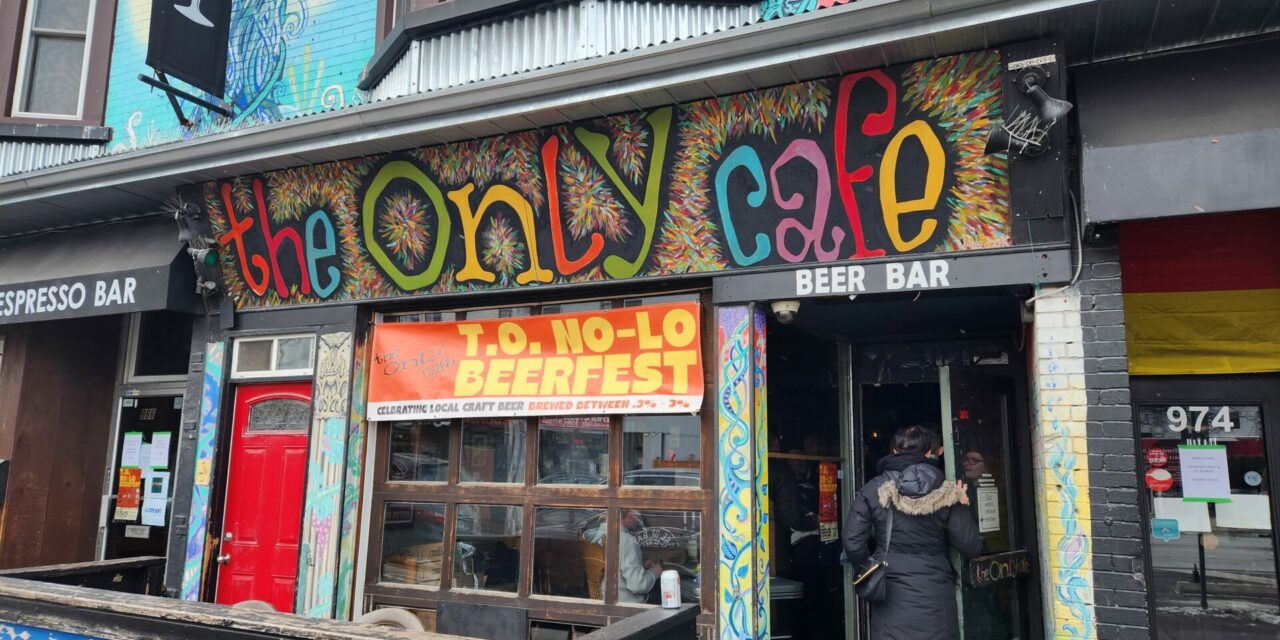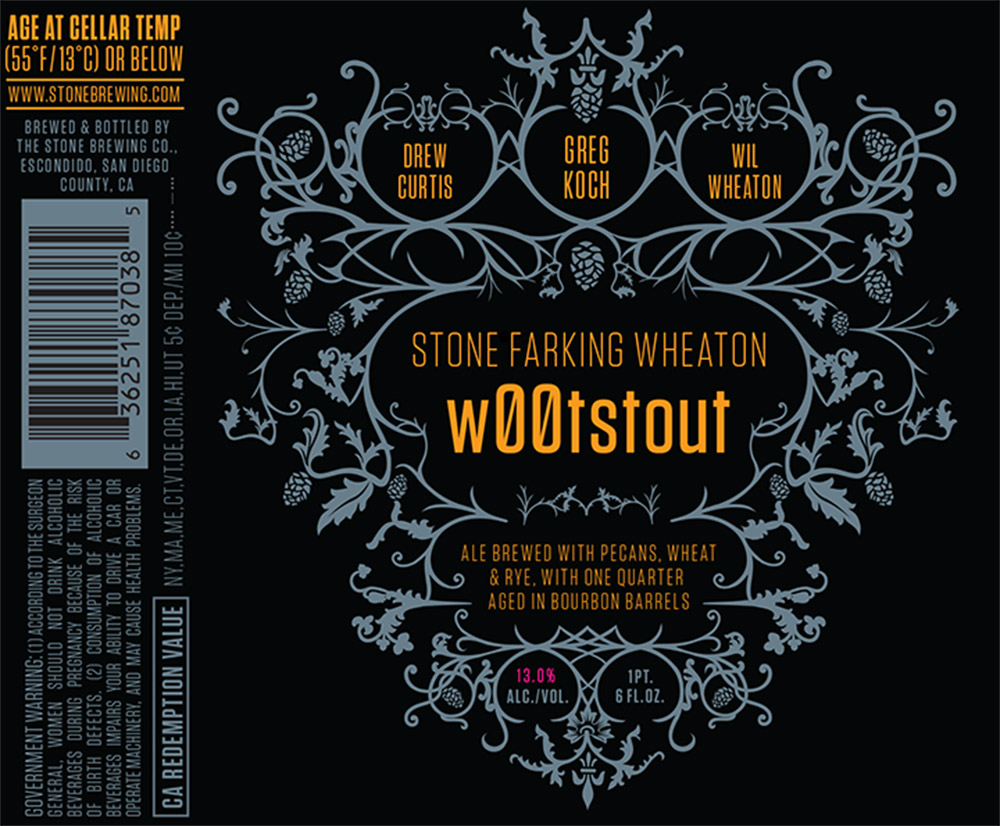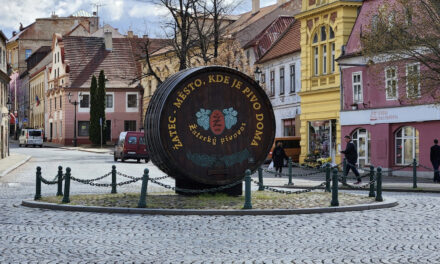On their seminal 1991 album, Shakespeare My Butt, The Lowest of The Low sang, “Let’s take a walk down to The Only and drink until our kidneys fail…”
Times change.
I’m very familiar with The Only Cafe. Since the 1980’s, it has been famous in song and story as a vibrant, working-class bar with a beer selection that punches far above its Danforth Rec-Room pedigree. Some of the regulars from that era still frequent the bar, but over time they’ve seen the number of taps and fridges expand, the construction of a patio, and the assimilation of entire other addresses. The Only, now three storefronts wide, has consistently been a driver of Toronto’s craft beer scene over the years, with raucous samplings taking over the patio even in the dark of winter.
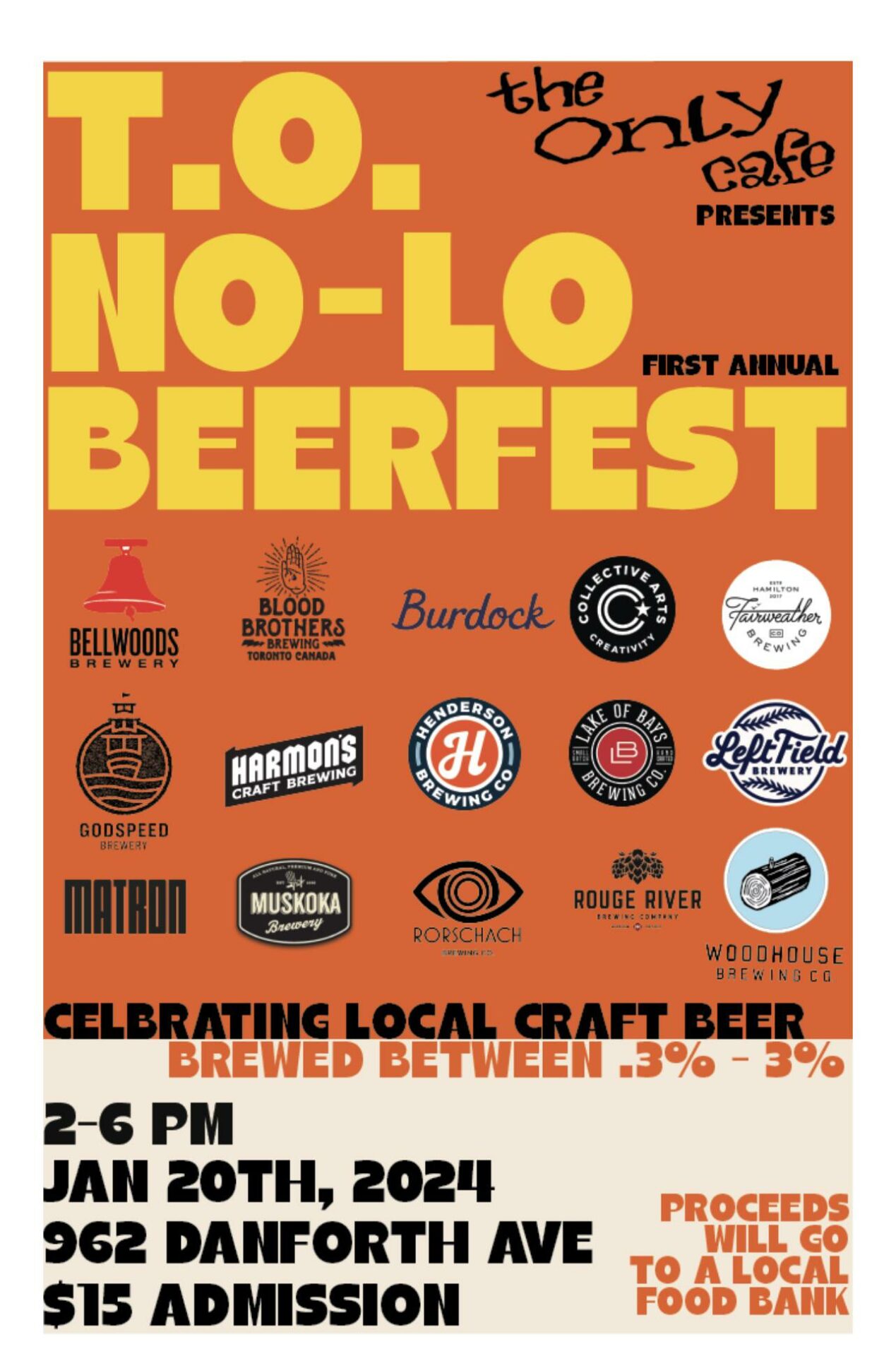
On Saturday, they continued leading the pack by putting on the T.O. No-Lo Beerfest. The Only Cafe, assisted by Steve Abrams from Harmon’s Craft Brewing, were going to attempt to draw people to The Only without any alcohol. The only manufacturers featured were Ontario based craft breweries that have begun to offer non-alc or low-alc products as part of their lineup.
“This,” I thought, “I gotta see.”
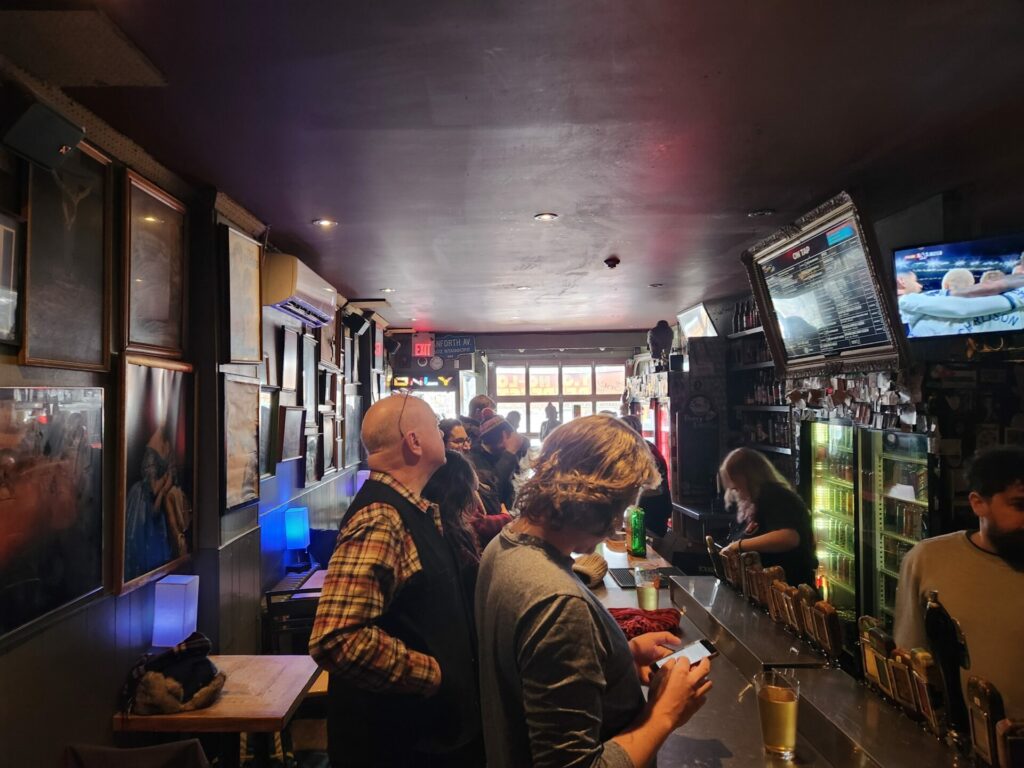
Imagine my surprise as I walked in twenty minutes after the beginning of the festival that we were well into standing room only and that new arrivals were being ushered in just to keep them warm. Indoors, the Only has a capacity of 150, but very few of them were willing to brave the patio at twenty below. I grabbed a table and waited for the line. As I sat down, I was staring into the bright blue eyes of a six-month-old in a baby bjorn.
A non-alcoholic beer festival has some differences from the traditional version, and not just the demographic (some of the patrons have hearing aids). For instance, with the 15-dollar entry, there are drink tickets, but basically, you get one for each low-alcohol offering. For the non-alcoholic options, there’s not really any reason to ticket. Whether it’s a traditional beer festival or otherwise, one of the key drives for the audience is novelty, and it may actually be more of a draw for the burgeoning non-alc sector.
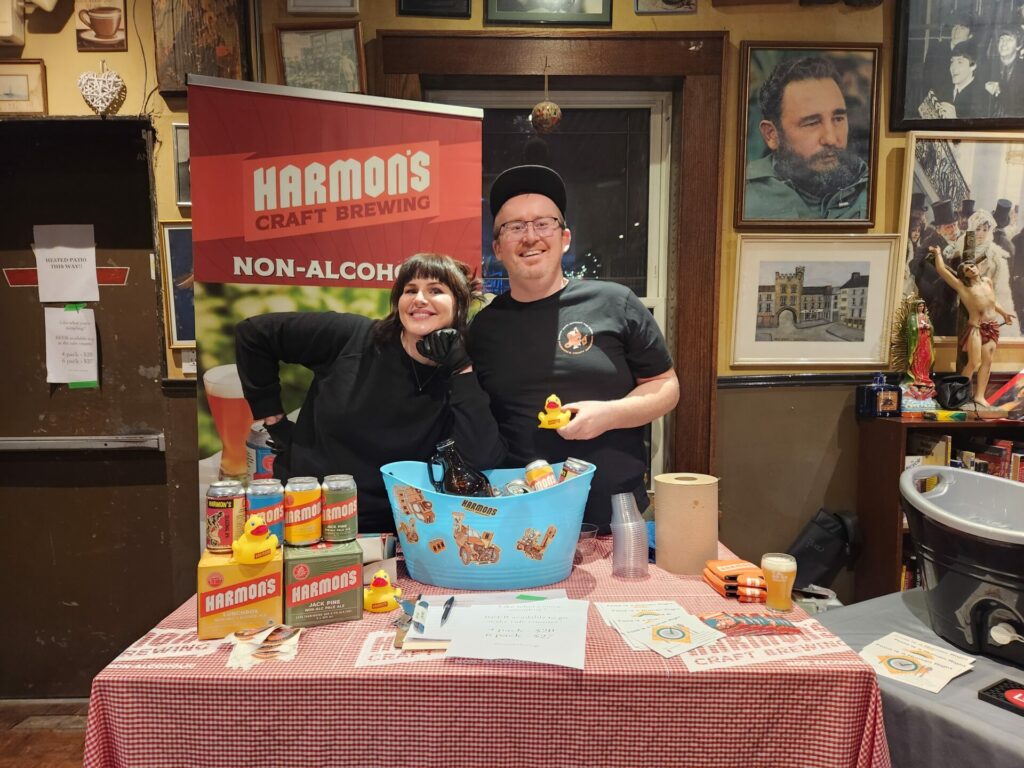
Harmon’s Craft Brewing is the product of Mill Street founder Steve Abrams’ retirement. It’s hard to stop brewing.
Consider your options as a drinker of non-alcoholic beer. If you go to the grocery store, they don’t really do singles. The smallest quantity you can really purchase is a six-pack, and there hasn’t traditionally been sampling of this kind of thing. If you’re just branching out into the idea, you don’t know what you’re going to get.
Confronted with thirty options at five ounces per glass and a four-hour time limit, the situation is finite. It’s achievable. The likelihood is that you’re not going to try everything since that’s quite a lot of liquid, and if you don’t like something, there are buckets. The variety of options is quite pronounced at this point. People aren’t just trying to make lager.
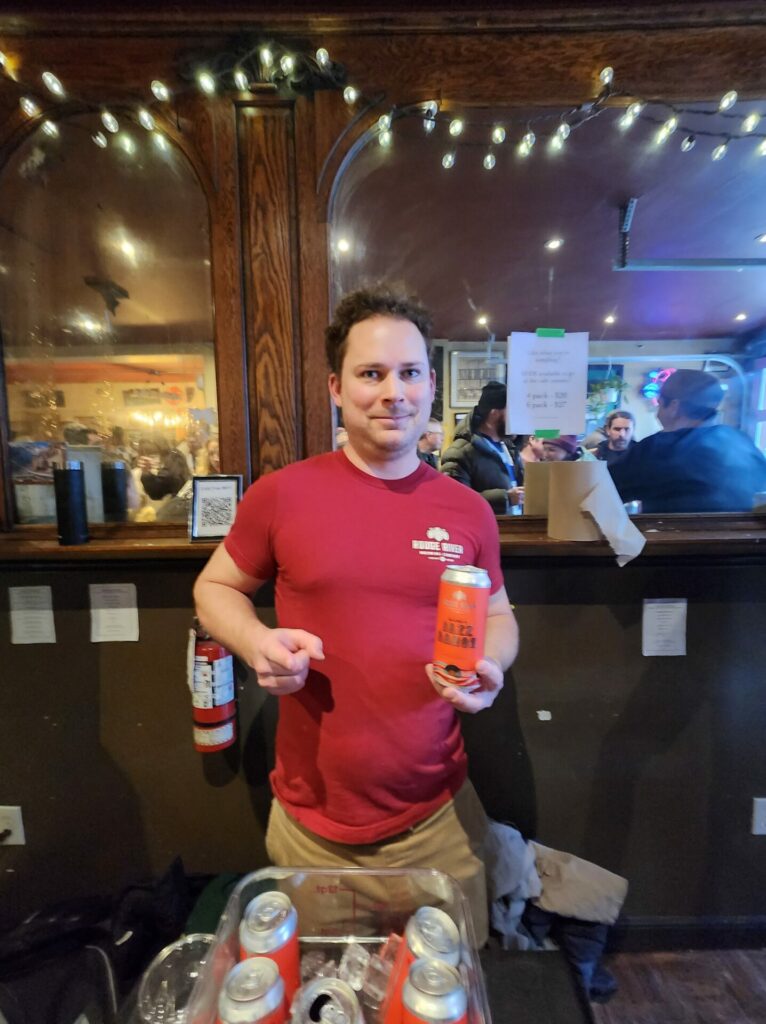
Rouge River’s Jordan Mills, who asked, after posing with Jazz Dance, whether it was rude to point.
In fact, the more successful non-alcoholic offerings on the day masked their lack of alcohol with other components. Bellwoods’ Jelly King Raspberry Blackcurrant, Rorschach’s Free Spirit Tropical Punch, Blood Brothers’ Blueberry Tangerine Sour Up, Burdock’s Lime Gose, and Collective Arts’ Guava Gose all rely on fruit, acid, or some combination of the two for their interest. Beer nerds who had commented that they might not have been beer at full strength would have been extremely perplexed by the additional departure from form.
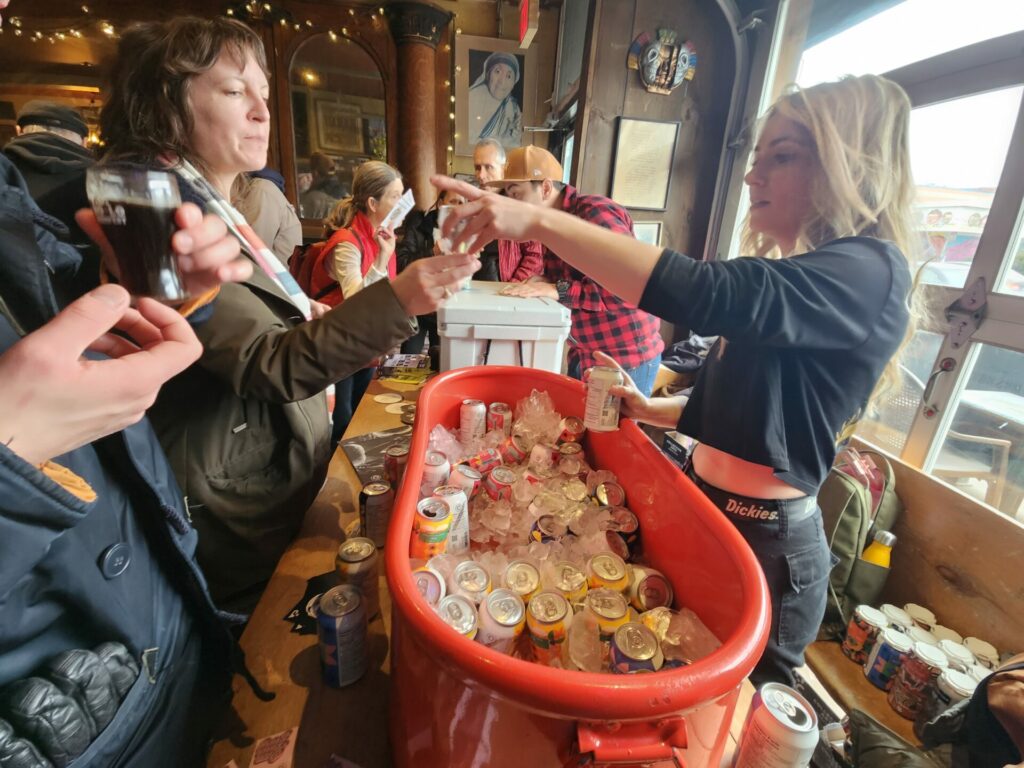
As one of the largest companies fielding non-alcoholic options, Collective Arts brought four varieties.
Hazy IPAs and Pale Ales tend to present some problems. Without sweetness to support the hops, you get phenolics and strange alkaloid characters. The most successful in that style was Rouge River’s Jazz Dance Hazy IPA, which has enough sweetness to approximate the style successfully without the alcohol. You could actually mistake it for a full-strength version.
In the Low-Alcohol section, both Godspeed’s Baby Svetly and Matron Fine Beer’s Pony acquitted themselves nicely. The latter may have had an edge due to the use of Ontario malted barley, which has a little more unfermentable sugar proportionally. Low-alc lagers are difficult to perfect because they depend so much on grain sweetness.
Entering the festival, I noticed something that bothered me: with a small amount of alcohol on board, a crowd undulates. There is a little flux to the crowd, and pathways form as people try to get to the booths. I would attribute this to the slight loosening quality alcohol has and the urgency of people wanting to use up their tickets. Because of that people develop an awareness of their surroundings.
In this instance, people stood firmly planted and clear-eyed and generally didn’t get out of each other’s way. For the most part, they talked to the people they showed up with. There was live music, but not much toe tapping. It reminded me of nothing so much as a United Church Tea Social; a genre of social activity that certainly provides fellowship but infrequently gets referred to as a banger.
It led me to wonder, “What is the purpose of a beer festival?” Putting the social aspect aside for a moment, it’s an opportunity for companies that make beer to get their samples in front of interested people who might not know about it otherwise. That seems obvious, but if you’re a long-term attendee of such things, you probably stopped thinking about it that way a long time ago. Some breweries seem put off by the social aspect, complaining about drunkenness or the fact they’re not making money on it. Of course not. It’s a marketing opportunity.
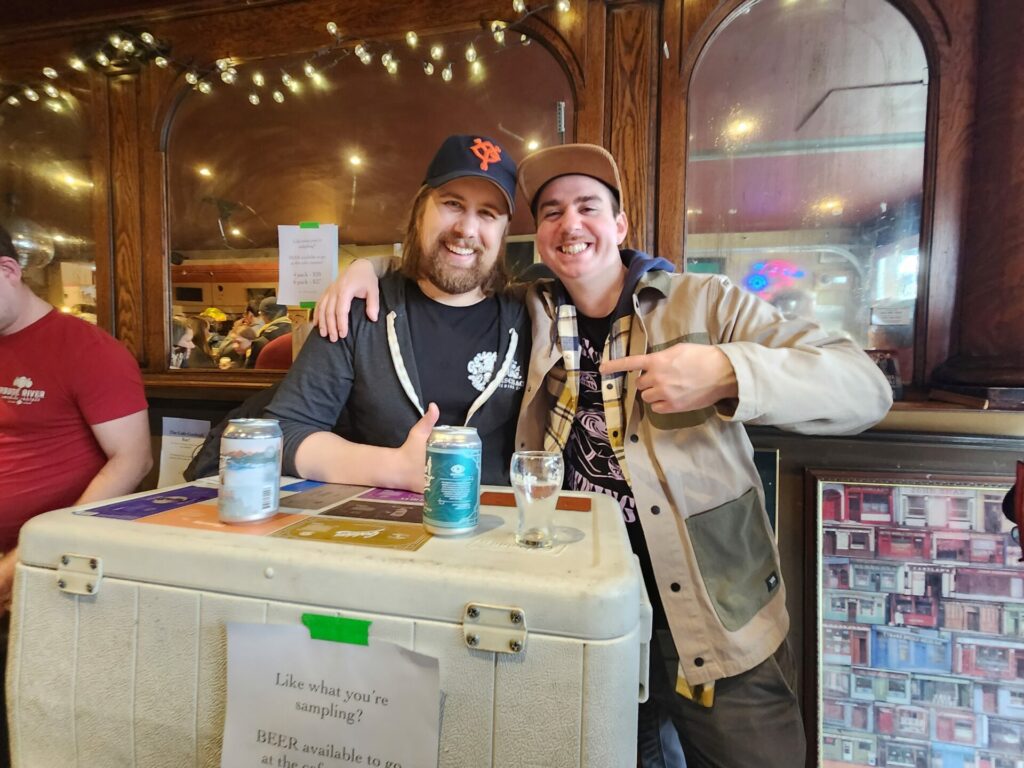
Rorschach Brewing is always having a good time.
In the Only’s case, they had the ability to sell cans to go. Four for $20 or six for $27. They didn’t have to worry about people being overserved or people driving home. In some ways, it’s the perfection of the festival form. A product demonstration with an immediate call to action for purchase. It left me amazed that no one had done it before, but The Only are always a little ahead of the curve.
It’s a different value proposition. It would appear that the purpose of a non-alcoholic beer festival is to allow people to make purchasing decisions. Without the impediment of alcohol in their system, people made those decisions and then went and got on with their day.
And yet, by 5 PM, three hours into the run time, the crowd had almost completely thinned out. By 4:40 or so, I had repaired to the regular bar and ordered a 4.2% saison, Bobo, from Matron Fine Beer. It occurred to me that while all of this activity was going on in the other room, the regulars of The Only sat at the end of the bar watching Udinese play Milan. Over the course of the afternoon, their numbers swelled as people joined them on that side of the bar, made conversation, bought drinks and generally had a nice time.
I wouldn’t like to bet on what my record is for time spent at an Only Cafe Beer Festival. I’ve certainly attended as an author and sold books, but I’ve also managed the entire duration as a patron, staggering about and talking to people. That’s the part I like about it. Communally, if everyone is about a pint and a half deep, there’s a looseness, a social confidence, and a mild curbing of inhibition that allows you to strike up conversation with strangers and relax into toe-tapping territory. You could develop those qualities if you practiced mindfulness and really worked at it, but historically speaking, beer has been a welcome shortcut.
Having seen it up close, I definitely think that the Non-Alc festival is a concept that works. In fact, I think it’s a public good. If you do it the way The Only did, you’re still supporting local breweries and providing consumers with a really cool opportunity to see products that would take them months to track down otherwise. We’ll see more of it in the coming years.
The difficulty is that I would bet people who drink Non-Alc products kind of miss that looseness. There needs to be a cultural component that puts people a little more at ease—upbeat danceable tunes or maybe some kind of activity to give them a distraction. I think probably miss a third space that allows them to get outside themselves. That’s what The Only has always been, so maybe it’s not a surprise they’re an early adopter.

